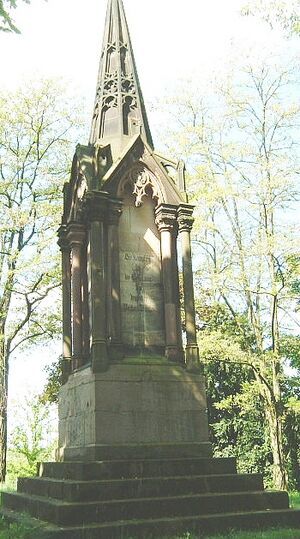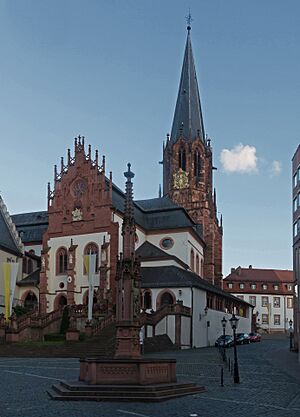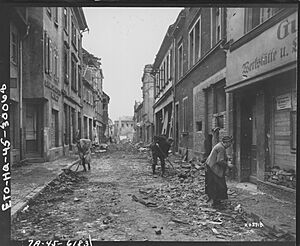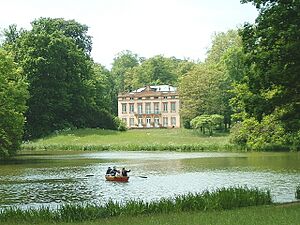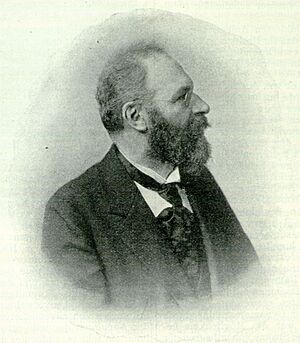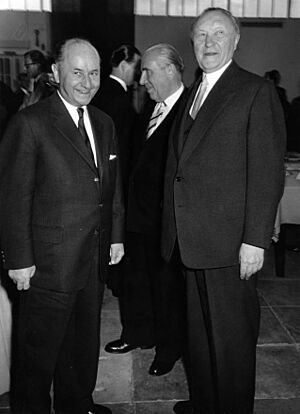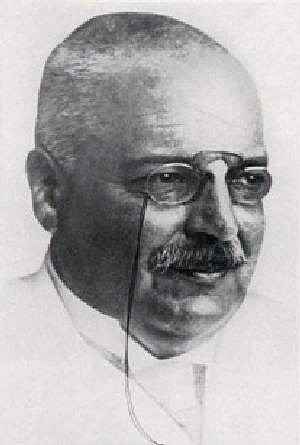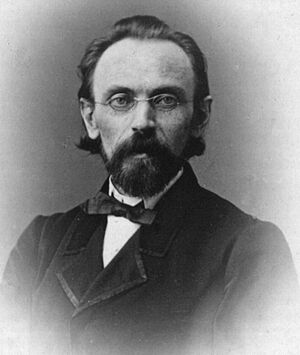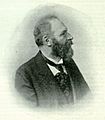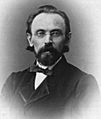Aschaffenburg facts for kids
Quick facts for kids
Aschaffenburg
|
|||
|---|---|---|---|
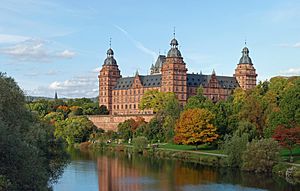
Schloss Johannisburg on the river Main
|
|||
|
|||
| Lua error in Module:Location_map at line 530: Unable to find the specified location map definition: "Module:Location map/data/Germany Bayern" does not exist. | |||
| Country | Germany | ||
| State | Bavaria | ||
| Admin. region | Lower Franconia | ||
| District | Urban district | ||
| Subdivisions | 10 districts | ||
| Area | |||
| • Total | 62.45 km2 (24.11 sq mi) | ||
| Elevation | 138 m (453 ft) | ||
| Population
(2022-12-31)
|
|||
| • Total | 72,444 | ||
| • Density | 1,160.03/km2 (3,004.47/sq mi) | ||
| Time zone | UTC+01:00 (CET) | ||
| • Summer (DST) | UTC+02:00 (CEST) | ||
| Postal codes |
63739–63743
|
||
| Dialling codes | 06021, 06028 (Obernau) | ||
| Vehicle registration | AB | ||
| Website | www.aschaffenburg.de | ||
Aschaffenburg is a town in northwest Bavaria, Germany. It's not part of the Aschaffenburg district, but it is the main city for that area.
For over 800 years, Aschaffenburg belonged to the Archbishopric of Mainz. The town is located at the western edge of Lower Franconia. It's separated from the central and eastern parts of the region by the Spessart hills. To the west, it opens up to the Rhine-Main plain. Because of its location, people here speak a local version of Rhine Franconian, not Bavarian or East Franconian.
Contents
- Discover Aschaffenburg's Location
- Aschaffenburg's Past: A Journey Through Time
- Aschaffenburg's Population and People
- How Aschaffenburg is Governed
- Aschaffenburg's Economy and Shopping
- Arts, Culture, and Fun in Aschaffenburg
- Amazing Places to See in Aschaffenburg
- Sports in Aschaffenburg
- Getting Around Aschaffenburg
- Health and Education in Aschaffenburg
- Media in Aschaffenburg
- Famous People from Aschaffenburg
- Aschaffenburg's Sister Cities
- Images for kids
- See Also
Discover Aschaffenburg's Location
Where is Aschaffenburg?
Aschaffenburg is located on both sides of the Main River in northwest Bavaria. It borders the state of Hesse. It's in central Germany, about 41 kilometers (25 miles) southeast of Frankfurt am Main. The smaller Aschaff river flows into the Main in the western part of the town. This area is also known as Bayerischer Untermain, meaning "Bavarian Lower Main."
Aschaffenburg's Climate
The climate in Aschaffenburg is continental. This means it usually has warm, dry summers. Winters are typically cold and damp. Aschaffenburg often gets less snow in winter than the nearby Spessart hills.
How Aschaffenburg is Divided
Aschaffenburg is made up of 10 different areas called Stadtteile (town parts):
- Damm
- Gailbach
- Leider
- Nilkheim
- Obernau
- Obernauer Kolonie (Obernauer Colony)
- Österreicher Kolonie (Austrian Colony)
- Schweinheim
- Stadtmitte (town center)
- Strietwald
Nilkheim and Leider are the only Stadtteile located on the left bank of the Main River.
Aschaffenburg's Past: A Journey Through Time
What Does the Name Aschaffenburg Mean?
The name Aschaffenburg comes from older names like Ascaffaburc or Ascaphaburg. It means "castle at the ash tree river." This name comes from the Aschaff river, which flows through parts of the town.
From Stone Age to Middle Ages
People have lived in the Aschaffenburg area since the Stone Age. Originally, it was a settlement of the Alamanni people. Later, Roman legions were stationed here. Around 700 AD, old writings mention "Ascapha" (Aschaffenburg).
Around 550 AD, the Franks conquered the area. Their leader built a castle here. In the 8th century, a Benedictine monastery was founded. It was dedicated to St. Michael, possibly by Saint Boniface. This monastery became the Kollegiatstift St. Peter und Alexander in the late 900s. In 869, King Louis the Younger married Liutgard of Saxony in Aschaffenburg. She was later buried here.
The name Ascaffinburg was first mentioned in 974. This was in a document where Otto II gave land to the church. In the Middle Ages, the town was known by various names. A stone bridge over the Main was built in 989. The town became part of the Archbishopric of Mainz in 982. In 1447, an important meeting called an imperial diet was held here.
Modern Times and the 19th Century
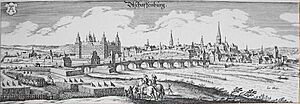
In 1552, the old Gothic castle of Johannisburg was destroyed. A new Renaissance castle, the Schloss Johannisburg, was built from 1605 to 1614. The town suffered a lot during the Thirty Years' War. Different armies took control of it at different times.
In 1803, Aschaffenburg became part of the Principality of Aschaffenburg. In 1810, it joined the new Grand Duchy of Frankfurt. However, the leader, Karl Theodor von Dalberg, kept Aschaffenburg as his home. In 1814, the town became part of the Kingdom of Bavaria.
From 1840 to 1848, King Ludwig I of Bavaria built a Roman-style villa west of town. It was called Pompejanum, inspired by a house in Pompeii. During the Austro-Prussian War in 1866, the Prussian Army won an important battle near Aschaffenburg.
World War II and Its Impact
In World War II, Aschaffenburg was badly damaged by Allied bombing. This included Schloss Johannisburg, which was later fully rebuilt. The German military strongly defended Aschaffenburg in the last weeks of the war. This led to the "Battle of Aschaffenburg" from March 28 to April 3, 1945. U.S. troops had to fight house-to-house to take the town. This caused a lot of destruction.
After World War II, the United States Army used former German military buildings. These became centers for displaced persons. Many Ukrainians, Poles, and Lithuanians stayed in these camps.
Aschaffenburg After the War
In the years after the war, Aschaffenburg grew strong economically. This was partly because it was close to Frankfurt am Main. Surveys in 2002 and 2006 showed that people in Aschaffenburg were very happy with their quality of life. This was due to good job opportunities, schools, public services, and cultural activities.
The U.S. military had a presence in Aschaffenburg from 1945 to 2007 during the Cold War. They had several bases here. Most of the U.S. Army left in 1992 after the Cold War ended. The last buildings were given back to the town in 2007.
Aschaffenburg's Population and People
How Many People Live Here?
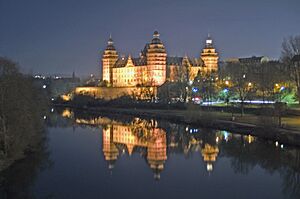
Aschaffenburg's population has grown over the years:
|
|
|
Age Groups in Aschaffenburg (2007)
Here's how the population was divided by age in 2007:
| Age | Population |
|---|---|
| 0-19 | 13,888 |
| 20-39 | 19,505 |
| 40-59 | 18,951 |
| 60+ | 16,556 |
How Aschaffenburg is Governed
Who are Aschaffenburg's Leaders?
The town is led by a Lord Mayor. Here are some of the people who have held this important role:
- Wilhelm Matt (1904–1933)
- Wilhelm Wohlgemuth (1933–1945)
- Jean Stock (1945)
- Vinzenz Schwind (1945–1970)
- Willi Reiland (1970–2000)
- Klaus Herzog (2000–2020)
- Jürgen Herzing (since 2020)
Aschaffenburg's Economy and Shopping
What Companies are in Aschaffenburg?
Aschaffenburg has a strong economy. In 2017, the GDP per person was very high. This shows the area is doing well financially. Some well-known companies here include:
- Linde Material Handling (makes forklifts and other equipment)
- Linde Hydraulics
- Joyson Safety Systems (makes car safety parts)
- DPDgroup (a delivery service)
Shopping in Aschaffenburg
The City Galerie is a large shopping mall in the city center. It opened in 1974 and was one of the first indoor malls in Germany. Aschaffenburg also has a pedestrian shopping area. Cars are not allowed there, except for deliveries.
Arts, Culture, and Fun in Aschaffenburg
Cultural Events
Aschaffenburg hosts many festivals, fairs, and concerts. One popular event is the annual Stadtfest, held on the last weekend in August.
Theaters and Entertainment
You can find many places for shows and music in Aschaffenburg:
- Colos-Saal: A popular live-music club.
- Erthaltheater
- f.a.n. Frankenstolz Arena: A large venue for events.
- Kabarett im Hofgarten
- Ludwigstheater
- Stadthalle am Schloss
- Stadttheater: The town theater.
- Zimmertheater
Museums and Art Galleries
Aschaffenburg has several interesting museums and galleries:
- Stiftsmuseum
- Naturwissenschaftliches Museum Aschaffenburg: A natural science museum.
- Gentilhaus
- KunstLANDing
- Städtische Galerie "Kunsthalle Jesuitenkirche"
- Neuer Kunstverein Aschaffenburg
- Künstlerhaus Walter Helm
- Christian Schad Museum: Opened in 2018, it features works by the painter Christian Schad.
Archaeological Spessart Project
This group studies and shares information about the history and culture of the Spessart region. They work with universities on scientific projects.
Libraries and Archives
- Stadtbibliothek Aschaffenburg: The town library.
- Stadt- und Stiftsarchiv Aschaffenburg: The town archive, which keeps historical records.
Cinemas
- Kinopolis: A modern movie theater with many screens.
- Casino
Recreation and Fun
In the Stadtteil of Leider, there's a big recreation area. It has indoor and outdoor swimming pools, an ice rink, and tennis courts. There's also a marina on the Main River for boats.
Amazing Places to See in Aschaffenburg
Main Sights
Some of the most famous places to visit in Aschaffenburg are:
- Schloss Johannisburg: This castle was built between 1605 and 1614. It has a library with old books, a collection of engravings, and paintings.
- Pompejanum: This is a replica of a Roman house found in Pompeii. King Ludwig I had it built and it opened in 1850.
- St. Peter und Alexander collegiate church: Founded in the 900s, this church has parts dating from the early 1100s. It holds important monuments and a painting by Matthias Grünewald.
- The historical old town.
- Across the river, you can visit the Park and Schloss Schönbusch.
You can also find the graves of famous writers like Clemens Brentano and Wilhelm Heinse in the Altstadtfriedhof (Old Town Cemetery).
Parks to Explore
Aschaffenburg has many beautiful parks:
- Schönbusch Park: Located in Nilkheim.
- Schöntal Park: Found in the town center.
- Aschaffenburger Schlossgarten: This park surrounds Schloss Johannisburg.
- Kleine Schönbuschallee
Sports in Aschaffenburg
Football (Soccer)
Viktoria Aschaffenburg is the main football club. It was formed in 1904. Their home field is Stadion am Schönbusch (Schönbusch stadium) in Nilkheim.
American Football
The Aschaffenburg Stallions started playing American football in 1991 at Schönbusch stadium. They also have a cheerleader squad.
Baseball and Softball
Aschaffenburg is home to the Aschaffenburg Mohawks Baseball and Softball team. The softball team won the German Championship in 2010. The adult baseball team won their league in 2011.
Getting Around Aschaffenburg
Roads
Aschaffenburg is on Bundesautobahn 3, a major highway between Frankfurt am Main and Würzburg. Another highway, Bundesautobahn 45, ends just west of town. The B 26 road also goes through the town.
Three road bridges cross the Main River in Aschaffenburg:
- Friedrich Ebert Bridge
- Willigis Bridge
- Konrad Adenauer Bridge
A road tunnel was built under the Schlossplatz in the 1980s to help traffic flow in the town center. A new "inner-town-ring" road was finished in 2013. This helps drivers bypass the town center and reduces traffic jams.
Parking
Aschaffenburg has about 7,500 parking spaces and eight public parking garages.
Public Transport: Buses and Trains
Aschaffenburg has a great bus network. The main bus lines are run by Stadtwerke Aschaffenburg. Other bus lines connect Aschaffenburg to nearby areas. A new regional bus station opened in 2008 next to the main railway station.
Railway Stations
- Aschaffenburg Hauptbahnhof (Main Station): This station has long-distance trains and regional connections. A new station building opened in 2011.
- Aschaffenburg-Hochschule (University of Applied Sciences): This stop opened in 2007 for students.
- Aschaffenburg-Süd (South)
- Obernau
- Schönbusch-Nilkheim: This station closed in 1974.
- Leider: This is a freight train terminal near Aschaffenburg's port. No passenger service here.
All passenger train services are provided by Deutsche Bahn.
Harbor
Aschaffenburg has a busy port on the Main River in the Stadtteil of Leider. It has railway access. In 2005, a lot of cargo passed through this port.
Airports
A small airport for private planes, Flugplatz Aschaffenburg, is in nearby Großostheim. Frankfurt Airport is about 46 kilometers (29 miles) from Aschaffenburg. You can get there in about 30 minutes by car or 45 minutes by train.
Health and Education in Aschaffenburg
Medical Care
Aschaffenburg has three main medical centers:
- Klinikum Aschaffenburg: The main hospital.
- Hofgartenklinik
- Frauenklinik am Ziegelberg
The town has many hospital beds, doctors, dentists, and pharmacies.
Schools and University
Aschaffenburg has many types of schools. About 18,000 students from the town and surrounding areas attend them. The Hochschule Aschaffenburg is a university of applied sciences.
Media in Aschaffenburg
Newspapers and Magazines
- Main-Echo: Aschaffenburg's main newspaper, published daily except Sunday.
- Prima Sonntag: A newspaper published only on Sunday.
- FRIZZ Das Magazin: A culture and scene magazine.
- Brot & Spiele: A culture magazine.
- Szene Magazin
Radio and Television
- Radio Primavera
- Radio Galaxy
- Main.tv - Das Primavera Fernsehen: Local TV programming for Aschaffenburg.
Online Information
- www.main.tv: A video website for the Aschaffenburg area.
- Kommweichei.com e.V.: A community and party scene website.
- MainReporter.de: A news and community portal.
- abscene.de: An online magazine.
- ABhörn: An online magazine.
- Main-netz.de: News and community information for the region.
Famous People from Aschaffenburg
Born Before 1900
- Daniel Brendel von Homburg (1523–1582): An Archbishop of Mainz.
- Friedrich von Hefner-Alteneck (1845–1904): An electrical engineer.
- Ernst Ludwig Kirchner (1880–1938): A famous painter.
- Alfons Maria Jakob (1884–1931): A neurologist.
- Otto Gentil (1892–1969): A painter and sculptor.
Born 1900 to 1959
- Hanns Seidel (1901–1961): A politician who was a Bavarian prime minister.
- Wilfried Hofmann (1931–2020): A diplomat and author.
- Felix Magath (born 1953): A famous football player and manager.
- Rudi Bommer (born 1957): A football player and manager.
Born After 1960
- Urban Priol (born 1961): A comedian.
- Carlos Boozer (born 1981): An American basketball player.
- Sabine Englert (born 1981): A handball player.
- Marcel Schäfer (born 1984): A footballer.
- José Holebas (born 1984): A Greek footballer.
- Daria Kinzer (born 1988): A singer who represented Croatia in Eurovision.
Notable People Who Lived Here
- Willigis (940–1011): An Archbishop of Mainz.
- Mathis Gothart-Nithart (c. 1475–1528): A Renaissance painter.
- Johann Schweikard von Kronberg (1553–1626): An Archbishop of Mainz who ordered the building of Schloss Johannisburg.
- Clemens Brentano (1778–1842): A poet and novelist.
- Emil Erlenmeyer (1825–1909): A chemist.
- Alois Alzheimer (1864–1915): A psychiatrist who studied Alzheimer's disease.
- Christian Schad (1894–1982): A painter.
- Guido Knopp (born 1948): A journalist and author.
Aschaffenburg's Sister Cities
Aschaffenburg has special friendships with other cities around the world:
 Perth, Scotland, United Kingdom (since 1956)
Perth, Scotland, United Kingdom (since 1956) Saint-Germain-en-Laye, France (since 1975)
Saint-Germain-en-Laye, France (since 1975) Miskolc, Hungary (since 1996)
Miskolc, Hungary (since 1996)
Images for kids
-
Aschaffenburg, by Matthäus Merian
See Also
 In Spanish: Aschaffenburg para niños
In Spanish: Aschaffenburg para niños





